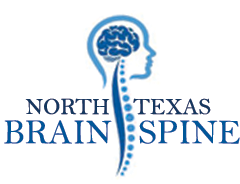
Overview of Computed Tomography
Computed Tomography, sometimes called a CT Scan, is a type of X-ray.
What is a CT Scan?
A CT scan is a type of x-ray imaging test that takes detailed images of different parts of the body. They are sometimes called CAT (computed axial tomography) scans. It produces a detailed image of the structure it assesses, allowing for simple visualisation of complex medical conditions.
When is it Performed?
CT scans can be performed for a number of different reasons. They are particularly useful in detecting cancers, diagnosing bone disease, bleeding within the brain, disease within the abdomen and problems with the blood circulation.
Based on the area that is scanned, there are head CT scans, thoracic CT scan, abdominal CT scans etc. CT scans are also used in emergency situations such as road traffic accidents to assess the degree of internal injury.
In the recent years, CT scans are used to stage and grade certain tumors. They help assess how severe a cancer is, and this can help decide on the best treatment possible.
How is it Performed?
The test is simple and straightforward to perform. Prior to the test, patients may have to answer a short questionnaire to ensure it is safe to perform the test. For example, the test should not be conducted in pregnant women.
The patient will be asked to expose the area that needs to be scanned, and will then lie on a CT scanning table. The CT machine is a large machine that looks a bit like a donut. Patients will lie on their backs, and the table will gently slide into the machine until it is in line with the area that needs scanning. The radiographer will then start the scan and the machine might make a little noise.
The scan takes between a few minutes to up to 30 minutes to perform depending on how detailed it needs to be. Patients can freely communicate with the staff in the adjacent room through a microphone if they need anything. In some patients, a dye is injected into the blood vessels to help enhance visibility of the blood vessels. Patients may be asked to breathe in and out gently to get clearer images.
Once the test has concluded, the patient will be asked to dress and can return home.
Results of the Scan
Often, results are obtained straight away, though sometimes the radiologist might take a while to report the scans. Based on the results, patients may either require further investigations or may commence treatment.
Benefits and Risk
The main benefit of the test is that CT scans provide a very clear image of complex conditions. It is very useful in deciding on a plan of management.
However, there are a few risks. CT scans involve exposure of different parts of the body to radiation. Excessive exposure to radiation can result in cancers and damage to the skin. It can damage a fetus if the woman is pregnant.
It is important to remember that CT scans will only be offered if the benefits of the test outweigh the risks.




